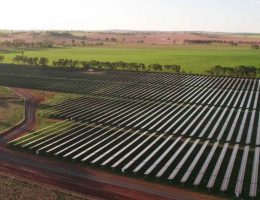The chair of the Australian Competition and Consumer Commission has again re-iterated his call for the removal of subsidises for rooftop solar and appears to have the support of federal energy minister Angus Taylor.
Last year, the ACCC chair Rod Sims delivered a series of recommendation to the federal government on how to tackle high electricity prices, with many of the recommendations having been embraced by the Morrison government as validation of its pro-coal agenda.
Sims used his speech to the AFR Energy Summit to single out incentives offered for the installation of rooftop solar as being an ‘unnecessary’ cost to consumers, suggesting that the cost of green schemes exceeded the value of the energy produced by the systems.
“Initial feed-in tariffs for rooftop solar were set too generously. Not only is the price paid for this energy far in excess of the value of the power delivered, the cost of these tariffs and other subsidies is paid for by non-solar customers, which is an unfortunate allocation of costs,” Sims said.
The ACCC has estimated that removing the solar rebate under the SRES scheme would save about $15 from the average bill. Under current rules, the rebate reduces each year, falling to zero by 2030.
Taylor this week leapt on the recommendation of the ACCC to wind back subsidies, and appeared to support the early phase-out of the Small-scale Renewable Energy Scheme. Taylor’s office has not clarified which renewable energy subsidies might be in the cross-hairs, after being contacted by RenewEconomy.
The ACCC has also recommended that State governments pay out the costs of feed-in-tariff contracts provided for residential rooftop solar installations through state budgets, rather than pass on the costs via increased electricity prices.
“Government schemes to promote small scale renewable generation continue to proliferate. Now is a good time to consider whether these schemes continue to provide the value we expect from government subsidies,” Sims told the AFR Energy Summit.
“In any case, all governments should consider replicating the Queensland Government’s decision to take the cost of these schemes onto their budget, rather than continue to force households that don’t have solar to cross-subsidise those that do.”
In 2017, the Queensland Palaszczuk government announced that it would commit $770 million of government funds to cover the costs of premium feed-in-tariffs being paid to households with rooftop solar, to avoid the costs being passed through via electricity tariffs.
Sims challenged governments to take on the legacy issue of overinvestment in network infrastructure that has been the primary driver of electricity price increases over the last decades. Sims recognised that this would mean many state governments, who remain owners of network assets, would take a hit to their budget bottom lines.
“Removing this over investment from regulatory asset bases would be a big win in improving affordability, and would also boost Australia’s productivity,” Sims said.
“I do not want to understate the boldness of this reform; it would require a willingness to right past mistakes, and for some governments to forgo significant revenue. But the flow on effects to the economy are worth the expense.”
In Sims view, it is the State governments that should also wear the costs of network overinvestments, saying that States that currently own network infrastructure should write-down the value of those assets to reduce prices paid by consumers. States that have privatised network infrastructure should effectively ‘rebate’ the overinvestment as the governments have received the proceeds of asset sales.
This would effectively see taxpayers paying the cost of network investments, with the costs being paid out of state budgets and government finances.
Sims cited research produced by the Grattan Institute that estimated that as much as 20 to 25 per cent of investment in network infrastructure may have been unnecessary and that an adjustment of this scale to network tariffs was needed the prices paid by consumers back to a fair level.
Sims told the summit that addressing the issue of electricity affordability was the gateway to addressing the additional challenges of decarbonisation and reliability, and dismissed suggestions that implementation of the Coalition government’s now abandoned National Energy Guarantee could serve as a ‘silver bullet’ for investment in the energy sector.
“Some argue that if we had a settled emissions reduction policy, or implemented the emissions reduction element of the National Energy Guarantee (NEG), that it would have solved the affordability problem. This is simply not so,” Sims said.
“Even if we solve the wholesale market’s reliability and emissions issues tomorrow, we will still face serious electricity affordability issues.”
The ACCC chair pointed to the fact that the generation of electricity represents just one-third of the retail cost of electricity, and that discussions on energy market reform must also look at the role of retailers, and how to address network costs.
“If you have three separate issues to deal with (that is, the electricity trilemma of reliability, environmental sustainability and affordability) then you need three different sets of solutions.”
“Addressing affordability, however, has the payoff of making it easier to address the other two concerns. Achieving gains in affordability will make absorbing some of the costs of achieving the other two objectives more achievable. It is also important to consider the affordability implications of different options to achieve reliability and sustainability.”










